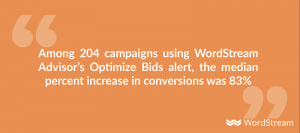
We all know how hard it is to accurately qualify sales opportunities. We all know how often even apparently well-qualified opportunities get delayed or abandoned altogether. And you’re probably tired of my quoting the CSO Insights research that fewer than 50% of forecasted opportunities actually close as predicted.
The problem is that the prospect is running to their agenda, not ours. They are driven by their timeframes, not ours. And – most significant of all – they are driven by priorities that inevitably span multiple projects and purchase opportunities – and which can change at a moment’s notice.
That’s why it’s so important that our sales people accurately determine whether the customer’s situation means that the project or purchase we’re discussing with them is possible, probable or so inevitable that it will go ahead as planned come hell, high water or a market meltdown…
IS THIS PROJECT REALLY INEVITABLE?
Let’s get the last one out of the way first. Inevitable projects or purchases really fall into three categories: the first covers materials that are essential to keep an on-going process or operation running – like raw materials for a factory. If they don’t want the lights to go out, our customers will inevitably buy something from somebody – the only question is from who and under what terms.
The other two classes of inevitable project tend to revolve around internal or external imperatives. A good example of an external imperative might be the urgent need to comply with new regulation or legislation where non-compliance would significantly impact the viability of the organisation.
Internal inevitable projects tend to be ones that are right at the top of the current priority list of the Chief Executive or board. These are the projects that go ahead even when the organisation has imposed a spending freeze that is impacting every other form of investment.
It should be obvious that the latter two types of inevitable project are rare beasts, and that salespeople often believe that their pet projects are inevitable when they are not. Testing inevitability requires that we use multiple touch points to validate the project – simply taking our sponsor’s word for it (unless they are the ultimate authority in their organisation) is a very risky assumption.
POSSIBLE OR PROBABLE?
So now let’s turn our attention to possible and probable projects and how to distinguish between the two. Before we can rate a project as “probable”, most or all of the following needs to already be in place:
- The project must have a sponsor with sufficient authority and ability to lead a coalition of their willing colleagues – a true mobiliser. Having a dialogue with a single interested individual, no matter what they tell you about their influence, isn’t enough
- The prospect must have clearly defined their requirements and decision criteria and established a decision-making team that represents all the significant internal vested interests
- The project either needs to already be formally funded or have the support of a proven budget maker who has the ability and motivation to either create the required budget or reallocate it
- The issue or opportunity that the project is intended to address must be acknowledged to have significant impact, and the risks, costs and consequences of sticking with the status quo must be substantial
- The project must be regarded across the organisation as a whole as being of high priority compared to other competing potential projects or investment opportunities
If these criteria cannot be met, the project can only be realistically regarded as possible rather than probable. In my experience, and particularly at the early stages, the vast majority of opportunities in most B2B sales pipelines are accurately categorised as possible rather than probable or inevitable.
Just to be clear: this is all about whether the project will go ahead, and not about whether we will get the decision. Those are related but separate decisions, and there is little to be gained (and no commission to be earned) from running a “successful” sales campaign and getting selected but then not being bought.
AMPLIFYING THE COST OF INACTION
If, by rational analysis, the project does seem to be somewhat or highly probable, then it becomes critically important we do all that we can to establish the costs and consequences of inaction and the risks associated with delay in the minds of our prospect’s decision making team.
If deferring the decision for another month, another quarter or another year is seen by them as having little impact on our prospect’s business, that’s exactly what they are likely to decide to do. And we’ve got to also remember that as our sales cycle evolves, and as our prospect eliminates other options from their consideration, the nature of our competition changes dramatically.
Rather than competing against other options for the project, we are now competing against other projects that are jostling for funding and being supported by other champions within the prospect organisation. Being selected is just the start – now we need to persuade and equip our own champions to argue the case for their project and our solution over all the other projects they will end up competing with.
We ignore this at our peril: if we fail to ensure that the prospect’s internal business case is as robust and well argued as possible, frankly we deserve to lose. And that would be scant reward for a hard fought and so-nearly successful sales campaign.
KEY NEXT STEPS
Here’s my advice: review all your current opportunities against the possible/ probable/inevitable criteria. Carefully revisit and refine the business case for every opportunity that cannot be categorised as inevitable. Assess whether our champion is a true mobiliser. And act accordingly.
It would be a shame, wouldn’t it, to lose when we have already come so far? And yet it clearly happens more often than we might care to acknowledge.
Business & Finance Articles on Business 2 Community(72)








